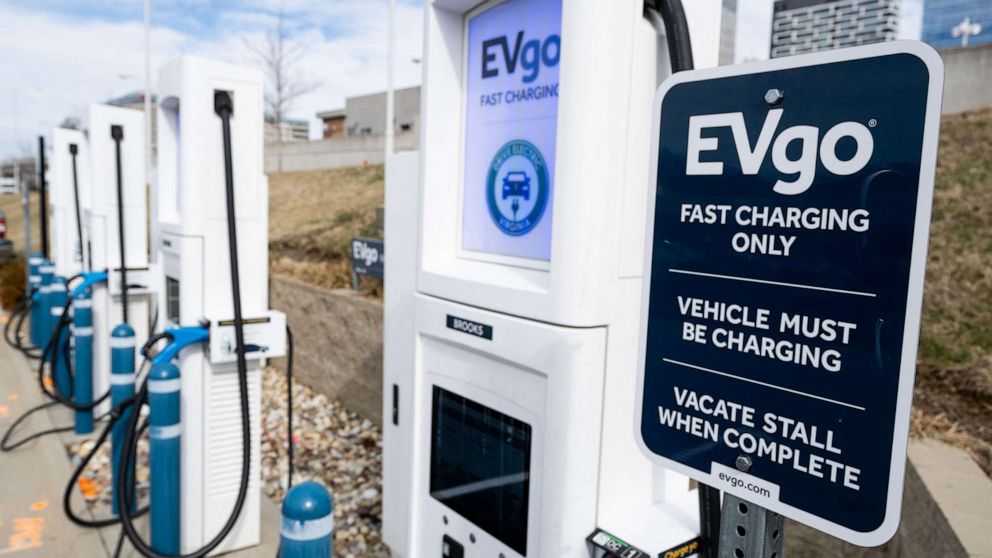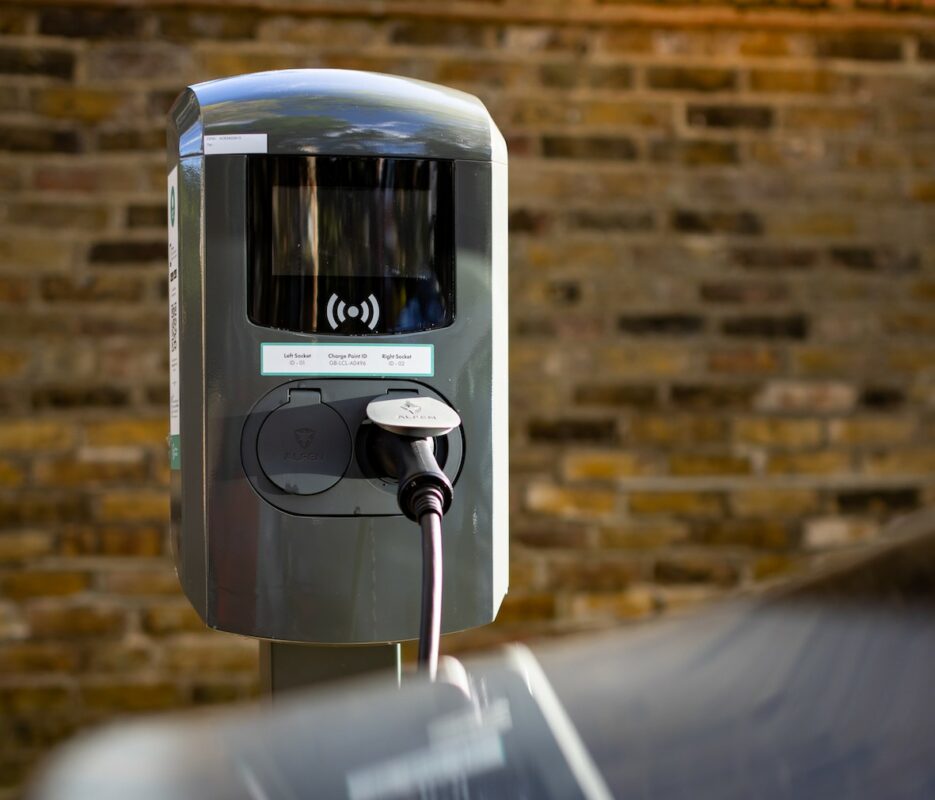Top Reasons Why It’s Essential to Buy EV Charging news Regularly
Top EV Charging Information: Secret Updates on Framework and Innovation

Current Advancements in Fast-Charging Modern Technology

Additionally, developments in battery innovation, consisting of improved thermal monitoring systems and greater power thickness batteries, complement fast-charging abilities. These advancements alleviate the risk of battery deterioration throughout quick charging, making certain durability and performance for EV owners.
In addition, the integration of wise billing remedies is enhancing customer experience, allowing real-time tracking and dynamic prices models. EV Charging news. This adaptability enables chauffeurs to optimize billing times and prices based on grid need
As car manufacturers remain to buy fast-charging networks, the collaboration in between industry stakeholders is important. Partnerships between charging station carriers and automotive producers are leading the way for comprehensive protection, eventually promoting a more durable EV community. These improvements are critical in sustaining the shift to lasting transport.
Federal Government Initiatives for Billing Growth
Government initiatives play an important duty in the growth of electrical car (EV) charging framework, helping with the change to lasting transport. Different government and state programs are being executed to boost billing availability, minimize the economic concern on customers, and promote the fostering of electric cars.
Notably, the united state federal government has allocated considerable financing through the Facilities Investment and Jobs Act, which earmarks $7.5 billion for EV billing network growth throughout the nation. This financing is targeted at releasing hundreds of new charging terminals, particularly in underserved areas, thus addressing variety stress and anxiety among possible EV buyers.
Furthermore, various states are establishing regulations to streamline the allowing procedure for billing terminal installments, which is vital for increasing deployment. Incentives such as tax debts and discounts for both consumers and businesses are additionally being introduced to motivate the setup of billing infrastructure.
Additionally, public-private collaborations are significantly ending up being a focus, leveraging exclusive investment to match federal government funding. These campaigns emphasize a joint strategy essential for building a reliable and comprehensive EV charging network, eventually contributing to a greener and even more sustainable future.
Ingenious Battery Solutions Enhancing Performance
Reinventing the landscape of electrical automobile (EV) innovation, innovative battery services are significantly improving efficiency and efficiency. Advancements in battery chemistry, specifically with lithium-sulfur and solid-state batteries, are causing raised power thickness, which enables longer arrays and faster charging times. These new battery types have the possible to outperform traditional lithium-ion batteries by supplying higher abilities while minimizing weight, therefore enhancing overall automobile effectiveness.
Furthermore, developments in battery administration systems (BMS) are maximizing energy usage and extending battery life-span. Intelligent formulas monitor battery health and efficiency, allowing real-time adjustments to charging and releasing processes. This not just improves the efficiency of the battery however additionally makes certain an extra reputable and lasting power source for EVs.
Additionally, the combination of recycling modern technologies is addressing the ecological influence of battery production and disposal. Innovations in second-life applications for EV batteries are facilitating their use in energy storage systems, adding to a round economic climate.
As these innovative battery remedies continue to advance, they guarantee to change the EV market, making electrical automobiles a lot more easily accessible and appealing to a broader audience while supporting worldwide sustainability goals.

Partnership Between Automakers and Billing Networks
Acknowledging the critical requirement for a robust charging facilities, automakers are increasingly working together with billing network companies to boost the EV ownership experience (EV Charging news). These collaborations aim to develop a seamless charging environment that benefits customers and sustains the transition to electrical vehicles
Major vehicle brands are signing up with pressures with well established billing networks to expand their billing terminal coverage, making sure chauffeurs have accessibility to convenient and dependable charging choices. Collaborations with networks like ChargePoint and Electrify America allow car manufacturers to incorporate billing options directly right into their lorries' navigating systems, guiding customers to the nearby stations and giving real-time accessibility updates.
Furthermore, these collaborations usually lead to the development of fast-charging modern technologies that significantly reduce the time needed to reenergize an EV. By pooling sources and expertise, automakers and billing networks can introduce much faster, creating options that satisfy the expanding demand for electrical wheelchair.
On top of that, joint initiatives may also result in more standard billing protocols, which can ease customer confusion and advertise broader EV adoption. On the whole, these calculated alliances are crucial in constructing a effective and user-friendly billing framework that fulfills the demands of an expanding electric automobile market.
Difficulties Dealing With EV Billing Facilities
As the electric lorry market proceeds to grow, a number of challenges are emerging that prevent the development of a comprehensive billing framework. One of the main obstacles is the insufficient variety of billing terminals, especially in underserved and country city areas. This space develops array anxiousness amongst prospective EV customers, hindering them from making the button.
Furthermore, the lack of standardization in billing innovation complicates the framework landscape. Variations in plug types and billing speeds can produce complication for users and raise functional intricacies for charging network operators. The assimilation of billing stations right into existing electrical grids postures significant difficulties. Several areas encounter capacity limitations, calling for considerable financial investments in grid upgrades to suit raised demand.
One more pushing issue is the high expense related to the setup and maintenance of billing terminals, which can be a barrier for both public entities and personal companies. Regulatory difficulties and zoning Clicking Here limitations can delay the release of billing infrastructure, restraining progress in broadening crucial solutions. Addressing these difficulties will be crucial for cultivating a robust EV ecosystem that supports the shift to sustainable transport.
Conclusion
Finally, the continuous developments in EV charging innovation, sustained by considerable government efforts and innovative battery remedies, are vital for the growth and effectiveness of electric car infrastructure. Partnerships in between automakers and billing companies further boost terminal insurance coverage, addressing the expanding need for available charging alternatives. Regardless of challenges that linger within the EV billing landscape, these developments represent a favorable trajectory towards an extra sustainable and efficient electric car ecological community.
Innovations in billing infrastructure have led to the advancement of ultra-fast chargers capable of delivering up to 350 kW of power, significantly minimizing charging times. Variants in plug types and billing try here rates can develop confusion for users and raise operational intricacies for charging network drivers.In final thought, the recurring developments in EV charging modern technology, sustained by substantial federal government campaigns and ingenious battery solutions, are vital for the development and performance of electrical lorry infrastructure. Collaborations in between car go to website manufacturers and billing suppliers even more enhance station insurance coverage, dealing with the growing need for available charging options. Despite obstacles that continue within the EV billing landscape, these growths indicate a favorable trajectory towards an extra lasting and reliable electrical car community.